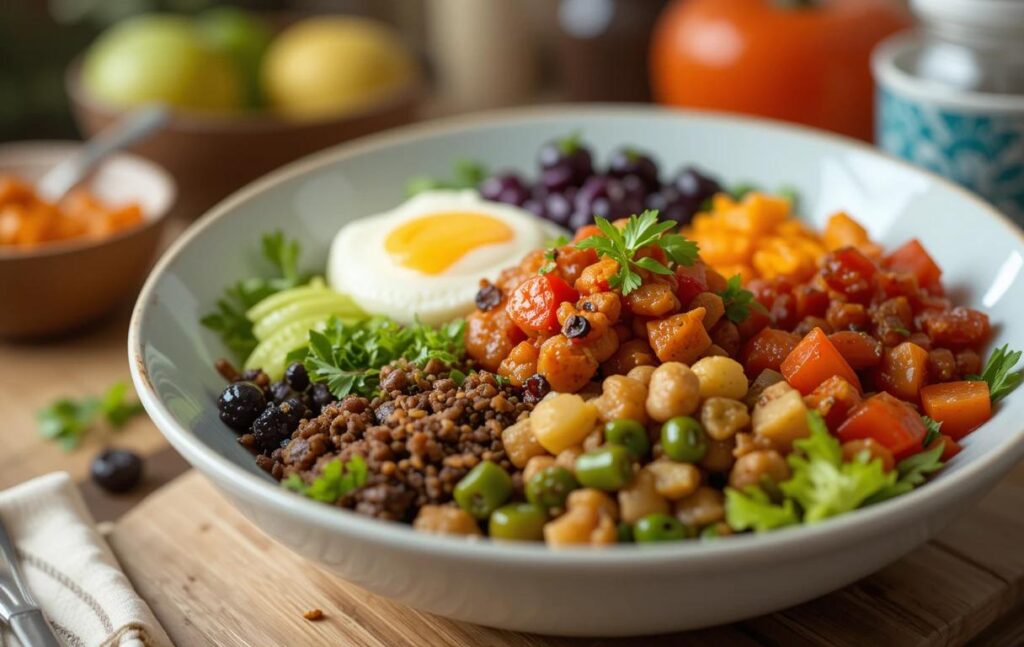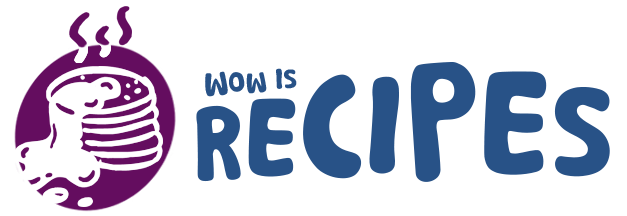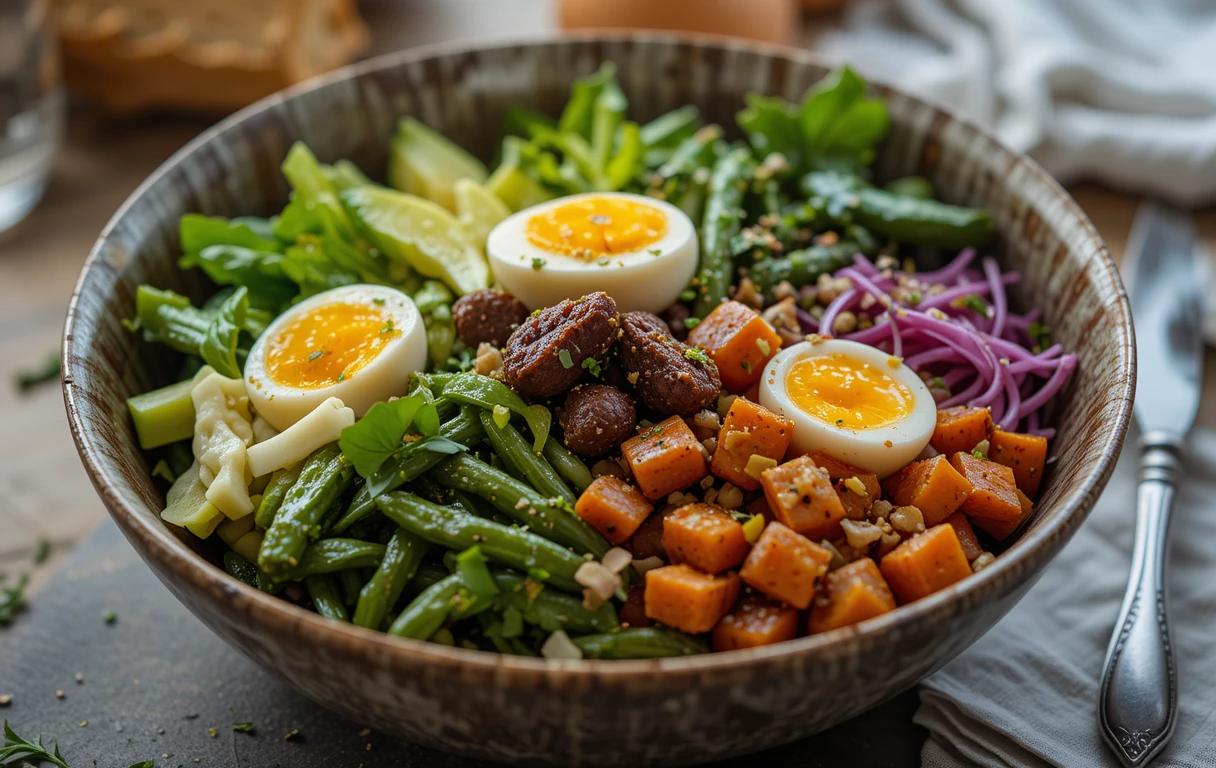What is a Vegan Buddha Bowl?
A vegan Buddha bowl is a beautifully arranged, wholesome meal consisting of plant-based ingredients. These bowls typically include a mix of grains, greens, vegetables, proteins, and flavorful toppings, making them the perfect balance of taste and nutrition. Named for their “bowl-like” fullness, they are versatile, easy to make, and a great way to enjoy a variety of colorful, nutrient-packed foods in one dish.
Why are Buddha bowls so popular? They are highly customizable and fit well into any lifestyle, making them ideal for vegans, vegetarians, or anyone seeking healthier eating habits. Let’s uncover why these bowls are a game-changer in plant-based diets.
Why Choose Vegan Buddha Bowls?
Benefits of Vegan Buddha Bowls
- Packed with Nutrients: Vegan Buddha bowls offer a balanced combination of macronutrients (proteins, carbs, and healthy fats) and micronutrients (vitamins and minerals).
- Customizable: You can tailor every bowl to suit your taste preferences, dietary needs, or seasonal ingredients.
- Eco-Friendly: Plant-based meals have a lower environmental footprint, making Buddha bowls an excellent choice for sustainable eating.
- Easy and Quick: With basic meal prep, you can assemble a Buddha bowl in minutes—perfect for busy lifestyles.
- Aesthetic Appeal: The vibrant, colorful ingredients make them visually appealing, inspiring you to eat healthily.
Why the Name “Buddha Bowl”?
The term originates from the way the bowls are typically overflowing with goodness, much like the rounded “belly” of Buddha statues. It symbolizes mindfulness and abundance in eating, which aligns with the principles of a balanced vegan diet.
Essential Components of a Vegan Buddha Bowl
Building the perfect Buddha bowl requires a thoughtful combination of textures and flavors. Here’s a breakdown of the essential components:
Base (Grains or Greens)
- Grains: Brown rice, quinoa, farro, or couscous.
- Greens: Spinach, kale, arugula, or romaine lettuce for a lighter option.
Vegetables
- Raw Veggies: Carrots, cucumbers, cherry tomatoes, bell peppers.
- Cooked Veggies: Roasted sweet potatoes, zucchini, broccoli, or Brussels sprouts.
Protein (Plant-Based)
- Legumes: Chickpeas, black beans, or lentils.
- Tofu and Tempeh: Marinated and grilled or pan-seared for extra flavor.
- Other Options: Edamame, seitan, or baked falafel.
Healthy Fats
- Avocado: Sliced or mashed for creaminess.
- Nuts and Seeds: Almonds, walnuts, pumpkin seeds, or hemp seeds for a crunch.
Toppings and Garnishes
- Dressings: Tahini sauce, hummus, or a simple vinaigrette.
- Extras: Pickled onions, sesame seeds, or nutritional yeast for added flavor.
How to Make a Vegan Buddha Bowl
Crafting a Buddha bowl is simple and rewarding. Follow these steps for a perfect bowl every time:
1: Select Your Base
Start with a generous portion of cooked grains or fresh greens to form the foundation of your bowl. For example:
- 1 cup of quinoa for a high-protein option.
- A bed of mixed greens for a refreshing, low-carb choice.
2: Prep Your Veggies
- Dice raw vegetables into bite-sized pieces for a crisp texture.
- Roast or steam harder vegetables like sweet potatoes or broccoli to add a tender, savory element.
3: Add Protein
Plant-based proteins like crispy baked tofu or smoky tempeh cubes elevate the nutritional value of your bowl. Pro tip: Marinate tofu in soy sauce, garlic, and ginger for extra flavor before cooking.
4: Include Healthy Fats and Toppings
Layer on creamy avocado slices, sprinkle with nuts and seeds, and drizzle a dressing of your choice. These elements tie the bowl together with rich flavors and textures.
5: Assemble and Garnish
Arrange your ingredients in a bowl, keeping them visually separate for an appealing presentation. Top with fresh herbs, microgreens, or sesame seeds to finish.

Ingredients:
For the Bowl:
- 1 cup cooked quinoa
- 1 cup chickpeas, drained and rinsed
- 1 cup baby spinach
- 1/2 cup shredded red cabbage
- 1 medium carrot, julienned
- 1/2 avocado, sliced
- 1/4 cup cherry tomatoes, halved
For the Dressing:
- 2 tbsp tahini
- 1 tbsp lemon juice
- 1 tbsp maple syrup
- 1 clove garlic, minced
- 1-2 tbsp water (to adjust consistency)
- Pinch of salt and pepper
Directions:
- Prepare the quinoa: Cook according to package instructions and let it cool slightly.
- Assemble the bowl: In a large bowl, arrange the quinoa, chickpeas, spinach, red cabbage, carrot, avocado, and cherry tomatoes in sections for a beautiful presentation.
- Make the dressing: In a small bowl, whisk together tahini, lemon juice, maple syrup, minced garlic, salt, and pepper. Gradually add water until you reach your desired consistency.
- Dress and serve: Drizzle the dressing over the bowl or serve it on the side. Mix everything together before enjoying!
⏰ Prep Time: 15 minutes | 🔥 Cooking Time: 15 minutes | ⏳ Total Time: 30 minutes
⚡ Calories per serving: ~350 | 🍽️ Serves: 2
10 Vegan Buddha Bowl Ideas
Here are some exciting variations to keep your meals interesting:
- Mediterranean Bowl: Quinoa, roasted chickpeas, cucumbers, olives, and a tahini drizzle.
- Asian-Inspired Bowl: Brown rice, sautéed bok choy, edamame, and sesame ginger dressing.
- Mexican Bowl: Black beans, corn, tomatoes, and avocado over a base of rice or greens.
- Rainbow Veggie Bowl: A mix of colorful vegetables and a citrus dressing.
- High-Protein Bowl: Lentils, tofu, and quinoa with a nut butter sauce.
- Spicy Thai Bowl: Rice noodles, peanut tofu, and a zesty peanut sauce.
- Breakfast Bowl: Sweet potato, avocado, kale, and a tahini-lemon drizzle.
- Fall Harvest Bowl: Roasted pumpkin, wild rice, pecans, and cranberry sauce.
- Raw Vegan Bowl: Zucchini noodles, fresh vegetables, and a cashew cream sauce.
- Sweet and Savory Bowl: Roasted vegetables, fruit slices, and a maple vinaigrette.
Tips for Meal Prepping Vegan Buddha Bowls
- Cook Grains in Bulk: Prepare several servings of quinoa, rice, or farro ahead of time.
- Chop Veggies in Advance: Store them in airtight containers in the fridge.
- Batch Cook Proteins: Bake a tray of marinated tofu or chickpeas for easy access.
- Portion Ingredients: Divide everything into meal prep containers for grab-and-go convenience.
- Keep Dressings Separate: Store sauces in small jars to maintain freshness and prevent sogginess.
FAQs About Vegan Buddha Bowls
- What are the best dressings for a Buddha bowl?
Tahini sauce, peanut dressing, or a simple lemon-tahini vinaigrette are popular options. - Can I make a Buddha bowl ahead of time?
Yes, meal prep your ingredients and store them separately. Assemble when ready to eat. - What’s the healthiest base for a Buddha bowl?
Quinoa is high in protein and nutrients, while greens are low-calorie and refreshing. - How can I make a kid-friendly Buddha bowl?
Use familiar ingredients like sweet potatoes, corn, and a mild dressing. - Are Buddha bowls good for weight loss?
Yes, they are nutrient-dense and portion-controlled, making them ideal for weight management. - Can I freeze Buddha bowl ingredients?
Grains and cooked proteins can be frozen, but fresh veggies are best stored in the fridge.
Conclusion
Vegan Buddha bowls are a delightful, versatile, and nutrient-packed option for anyone looking to eat healthier without compromising on flavor. With endless customization possibilities, you can make every meal exciting and satisfying. Try one of the variations or create your own masterpiece today!
Recipes:

